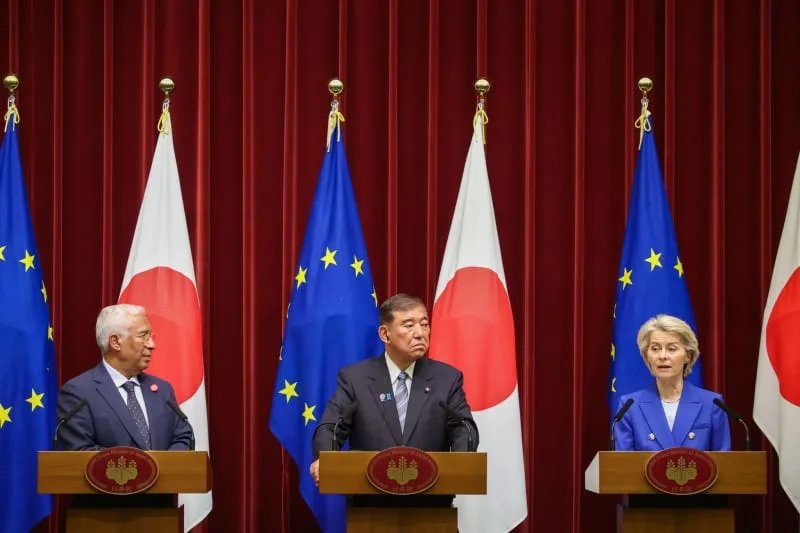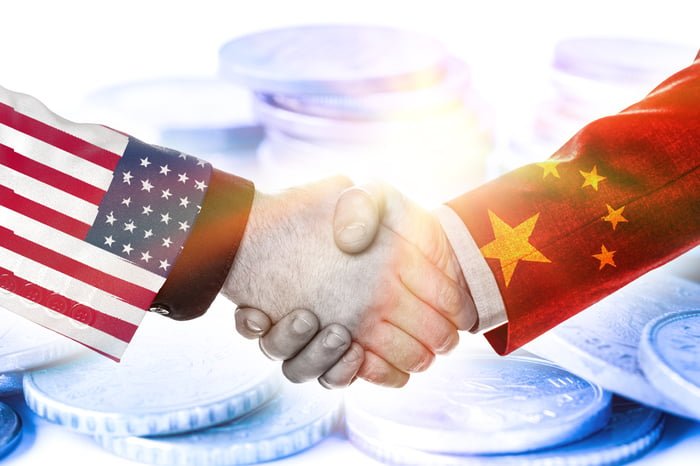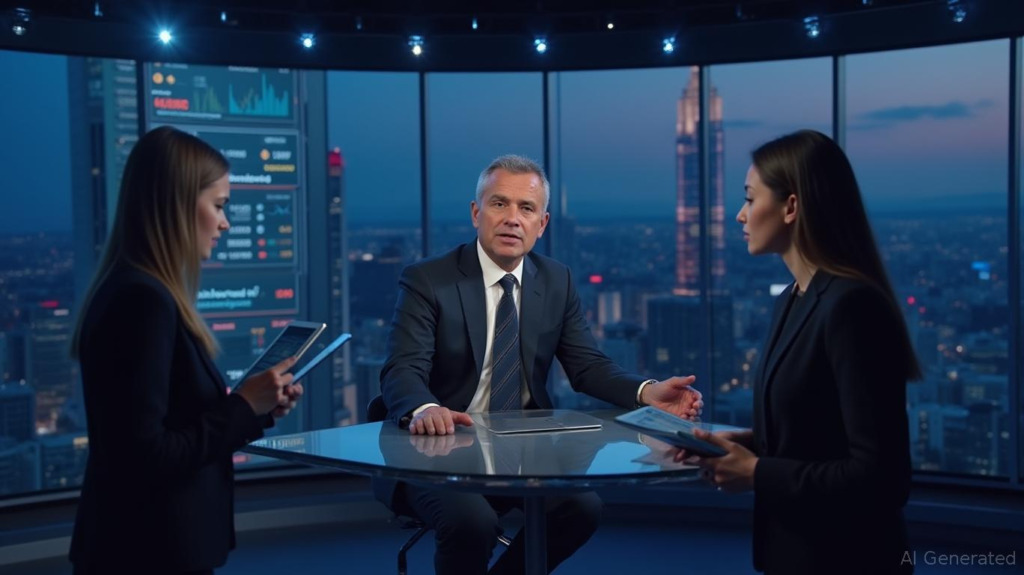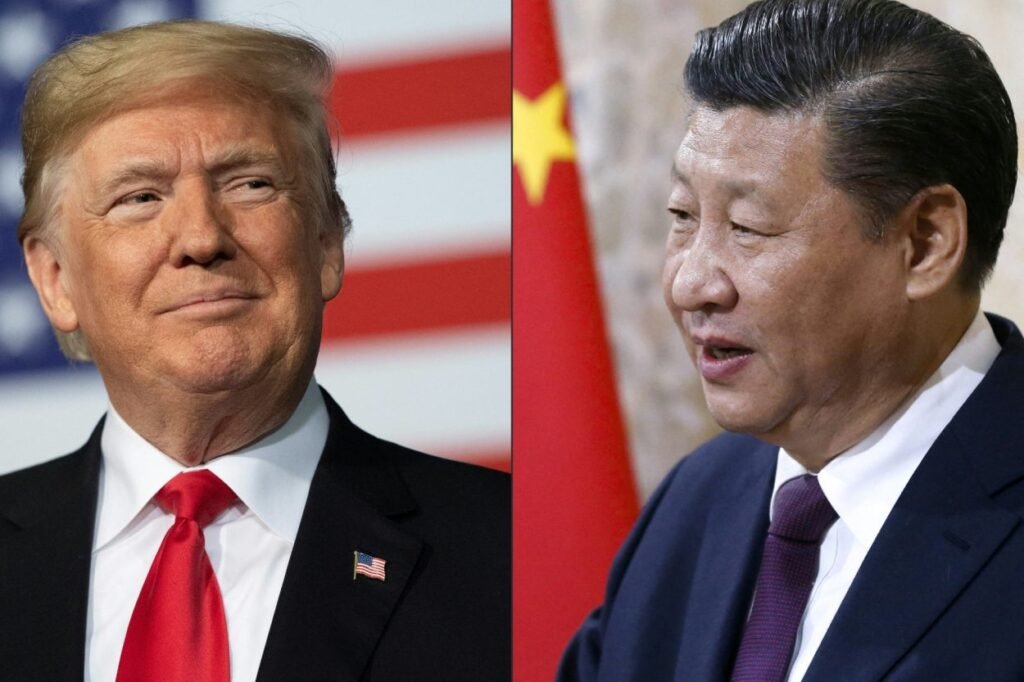
This is a satellite image collected on Nov. 13, 2012, of the Maoniuping Mine, one of China’s largest rare earth elements mines, located near Mianning, Sichuan province, China.
DigitalGlobe/Maxar via Getty Images
hide caption
toggle caption
DigitalGlobe/Maxar via Getty Images
Deep in an underground, World War II-era vault on the outskirts of Frankfurt, Germany, investment manager Louis O’Connor guards his firm’s most valuable assets. The treasure inside? Rare earth elements.
“Make no mistake about it, there’s 3 1/2-meter walls and doors and armed security,” says O’Connor, the CEO of Strategic Metals Invest, a firm that lets individual investors buy into stockpiles of rare earths.
Many so-called rare earth elements are actually quite common, and they are mined globally, but China has a near-monopoly on refining them for use in everyday electronics, like smartphones and speakers, as well as for crucial defense systems, like fighter jets.
When China decided to tighten control over supply chains for seven rare earth elements this spring, O’Connor says he felt the pinch immediately. One investor touring the company’s vault at the time offered on the spot to buy O’Connor’s entire inventory of terbium and dysprosium, two valuable “heavy” rare earth elements, he says.
The episode illustrated the power of China’s dominance over the industry.
“They’re installing what you might call a tap system, where they can turn that tap on and off,” says O’Connor, remarking on China’s recent policy.
That supply chain chokehold has given China a powerful tool it has wielded in a trade war with the United States. Within weeks of China requiring foreign companies to apply for a license to buy rare earths in early April, several U.S. and European corporations said they were forced to shut down production lines. Regaining access to Chinese rare earths was a central point of contention in U.S.-China trade negotiations this spring.
But China did not always enjoy such dominance. Developing an export control regime they could minutely control took decades of sometimes painful trial and error.
Spotting strategic value

The Mountain Pass rare earth mine and processing facility, owned by MP Materials, is viewed from an airplane flying at 37,000 feet on Sept. 1, 2023, in Mountain Pass, Calif.
George Rose/Getty Images
hide caption
toggle caption
George Rose/Getty Images
For much of the second half of the 20th century, the United States controlled the market on rare earth elements, after prospectors discovered them in Mountain Pass, Calif., in 1949.
China recognized the strategic value of rare earths, and starting in the 1960s, Chinese executives visited Mountain Pass several times, says Mark Smith, who was the CEO at Molycorp, a former rare earths processing company at the Mountain Pass mine.
“We toured them. We explained what we do, allowed them to take pictures and everything else. They took it back to China,” Smith says, who gave tours of Molycorp to Chinese visitors in the 1980s and 1990s.
Chinese refineries then improved on technology, and taking advantage of cheap electricity in China, hundreds of lucrative mining and processing firms in the country popped up to service mostly domestic demand for rare earths.
But the industry was highly unregulated and chaotic, as hundreds of small-scale, private mines and refineries competed against one another, undercutting each other’s profits.
“They drive down the price against themselves,” says Chris Ruffle, an investor who has worked in China for decades, including in the metals industry. “They kill themselves.”

China’s then-industry minister, Xiao Yaqing, attends a news conference of the State Council Information Office on March 1, 2021, in Beijing.
Visual China Group/Getty Images
hide caption
toggle caption
Visual China Group/Getty Images
“China’s rare earths aren’t being sold at a ‘rare’ price but at an ‘earth’ price,” Xiao Yaqing, a former minister of industry, complained in 2021.
A dirty business
As Chinese producers sought an upper hand in rare earths, they also unleashed unrestrained mining that came at great cost to the environment.
In the early 2000s, Ruffle visited a private rare earths refinery in Jiangsu, a province in southern China. “The thick smoke slightly gave it away,” Ruffle says of the facilities. He describes huge piles of tailings — toxic, metallic by-products from other industrial processes — sitting on the bare ground.
Destructive, small-scale mining was especially prevalent in southern China, where the most valuable, natural deposits of “heavy” rare earth elements are.
“They would mine the side of the hill with their axes and picks and shovels, and then they would dig a hole in the ground, no liners or anything like that at all. Then they poured five gallon buckets of sulfuric acid or hydrochloric acid … and let that certain stew for a while,” remembers Smith, who frequently visited China during this period. “When the storms come in, all that acid just washes out.”
The mining left China’s terrain scarred with lasting groundwater and soil pollution. Local residents staged periodic protests against rare earth mining, but the industry provided local governments with abundant revenue, and they repeatedly ignored central government orders to close down dirty mines.
A Chinese media investigation into the industry in 2012 compared the rare earths industry in China during this time to trafficking illegal drugs. “There are generally two types of people who can deal with rare earths: the first is someone who has just been released from prison, and the other is someone who can get someone out of prison. Those who are not afraid of death and leading cadres are all involved,” the state media article said.
Multiple Chinese businesses and individuals declined requests to comment for this story.
Consolidation or bust
By the late 1990s, Beijing had had enough of the domestic price wars and local pollution. It started imposing production and export quotas to incentivize more advanced processing of rare earths. The quotas also aimed to cut down on pollution by setting caps on how much mines and refineries could produce and protected the industry from foreign intervention.
The quotas created two sets of prices, “in effect, two-tier pricing, when exports were limited to the rest of the world that resulted in lower rare earth prices for domestic Chinese consumers,” says Rod Eggert, a professor at the Colorado School of Mines.

Samples of rare earth minerals from Bayan Obo mining district are on display at the Institute of Geology and Geophysics, Chinese Academy of Sciences, on May 17, in Beijing, China.
Visual China Group/Getty Images
hide caption
toggle caption
Visual China Group/Getty Images
There was also a second, unintended consequence to the quotas: they created a thriving smuggling industry. Up to 30% of the country’s rare earth products in the mid-2000s was illegal, smuggled out of China despite state controls, analysts estimate, because of demand from Japan and the U.S.
Then, American and European companies cried foul over the export quotas, and in 2014, the World Trade Organization ruled China could not use them.
But China was unfazed. It was already shifting tactics. It would seek global dominance in rare earths not through controlling the volume of outputs, but instead, by controlling which firms could operate.
A “secret war” to consolidate
Chinese central authorities dubbed the campaign “one plus five”: an ambitious, and often ruthless, effort to winnow down the entire rare earth industry to just six consolidated companies. Authorities called the consolidation their “secret war” against illegal production.
Starting in 2011, provincial authorities were instructed to mount unannounced audits of mines, to seize contraband ore and by-products, and when needed, dynamiting and smashing to pieces illegal mining operations.
“I saw firsthand how the private sector got squeezed out,” says Ruffle, the investor.
Within four years, China declared victory. It announced the closure of dozens of smaller mining and refining companies and guided the mergers of surviving companies into six supersized, mostly state-owned firms, nicknamed the Big Six in China.
Through the Big Six, China could now largely control both supply and price.
“Whereas before you had a lot more competition from different producers, now you get very homogeneous pricing,” says Jan Giese, a Frankfurt-based rare earth trader. “It’s difficult to have competitive bids.”
American upstarts
Unlike metal commodities like nickel or gold, there is no independent exchange for buying and selling rare earth elements.
Because Chinese companies can cause huge price fluctuations depending on how much they decide to produce or export, investors have been wary of pouring money into new ventures in the U.S., say U.S. refining and mining companies.
That has made raising capital to build refining plants a big challenge for American companies trying to break back into the industry.

NioCorp CEO Mark Smith talks to a group of investors Oct. 6, 2021, about the prospects for a mine near Elk Creek in southeast Nebraska. Smith is a former CEO of Molycorp.
Josh Funk/AP
hide caption
toggle caption
Josh Funk/AP
“They’re putting their money into things like Alphabet and, you know, Amazon and, you know, all the high-flying types of investments and just very, very little, if any, is coming into the mining industry,” says Smith, the former CEO of Molycorp.
Some are still trying. Smith’s new venture, NioCorp, is opening new mines and refining capacity for rare earths in Nebraska.

Tomas Villalón, chief technology officer and co-founder at Phoenix Tailings, poses for a portrait on June 11.
David L. Ryan/Boston Globe/Getty Images
hide caption
toggle caption
David L. Ryan/Boston Globe/Getty Images
Phoenix Tailings, a startup in Massachusetts, is also among a handful of U.S. companies prepared to refine rare earths, by refining the tailings, or leftover waste, from mining companies.
“We have to be full speed on the gas to make sure we’re successful here,” says Nicholas Myers, one of the co-founders and CEO.
The company already makes rare earth magnets for automotive and defense companies, and it is currently building a second plant in New Hampshire which the company says can meet about half of the U.S.’ defense needs for rare earth products.
For years, Myers says his company struggled to attract investment at the magnitude needed to compete with Chinese firms in scale.
This year, things changed, after China implemented a licensing system for foreign companies which caused rare earth exports to plummet.
“Definite tone shift,” says Myers, “I think what happened is the end customers, the folks at the big automotive companies or defense primes, realized that they had told their bosses that China would never shut off the supply for them.”
But China did shut off that supply.
The sudden cutoff galvanized U.S. investor interest in rare earths, Myers says. Phoenix Tailings garnered a major round of investment in May, and now, for the first time in decades, the U.S. may refine rare earth elements again.
Emily Feng reported from Burlington, Mass., and Washington, D.C. Aowen Cao contributed research from Beijing.












